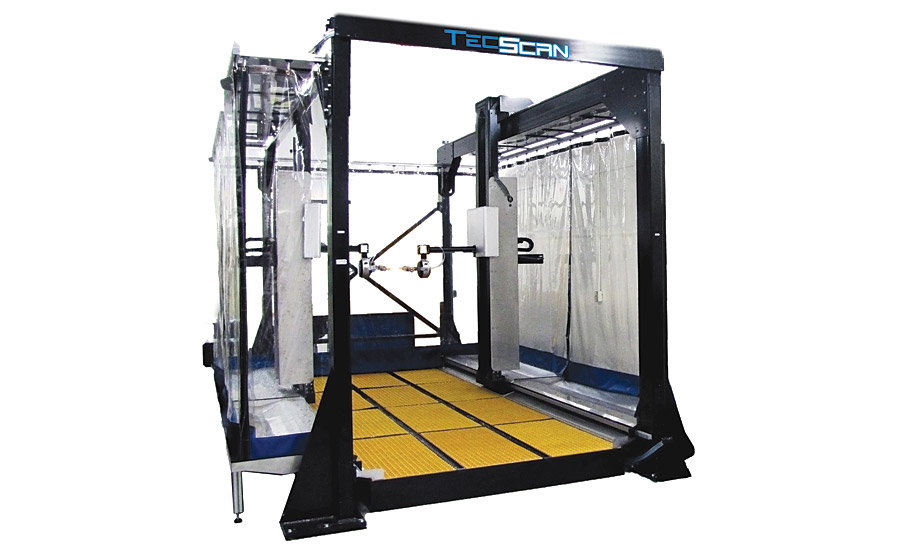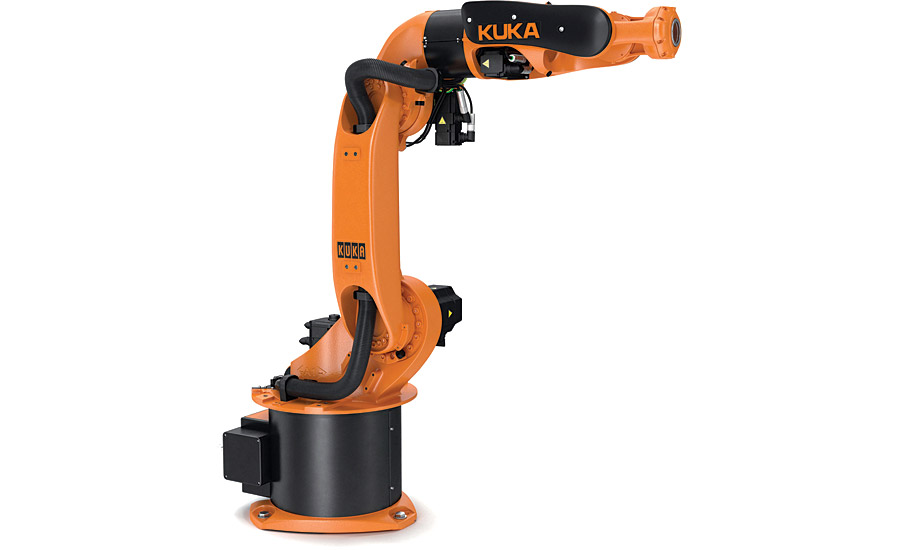The Use of Industrial Robots for NDT Applications
An efficient use of articulated robotic arms for NDT is still a work in progress.

Cartesian NDT Scanners: Squirter Gantry

An industrial articulated arm robot

Cartesian NDT Scanners: Eddy Current Scanner



Nondestructive testing is the preferred quality control technique for many manufacturers from different domains ranging from industrial to aerospace. With automated NDT, we use scanners and robots to increase the speed and repeatability factor of NDT techniques, creating much more efficiently produced precision measurements. However, obvious automated NDT scanner requirements are needed to achieve high quality control and precision measurements.
This article provides a basic comparison between typical Cartesian scanners using a combination of linear axes (X, Y and Z axes) and rotational axes, and articulated robotic arm systems using six polar axes, often used for handling machine tools, welding and part movement.
AUTOMATED CARTESIAN SCANNERS
Typical scanners in the NDT industry consist of Cartesian scanners that can be customized for their respective job specifications. These systems are usually designed with highly accurate actuators, servo or stepper motors and optical encoder modules, making them ideal tools for real-time signal acquisition during the axes movement. They also provide automation with increased inspection speed, real-time signal processing, imaging capabilities and scanning repeatability. However, in order to achieve such design characteristics, stringent requirements must be imposed on the scanner’s automation technology being used. Some of these requirements consist of: the mechanical design for high positioning accuracy of all axes; the motion control strategy designed for fast position feedback; the required real-time encoder monitoring; the integration of high-speed interface for fast data transfer rate.
Whether using scanners for automated ultrasonic or eddy current testing, the quality of the scanner is related to the final results of C-scan mapping, which are directly related to the signal acquisition and probe’s position and stability during said acquisition. This becomes even more critical when dealing with parts exhibiting complex 3D geometries. An additional challenge exists in designing automated scanners with increased dexterity for handling common complex geometries. The Cartesian scanner solution then becomes a multi-axis scanner where the position of all axes needs to be synchronized to achieve accurate testing. Although the ultimate aim of automated NDT is to achieve speed and carry out total inspection, when performing scanning of critical components such as for the aerospace industry, inspection reliability, resolution and repeatability become more important than the overall inspection time.
The reliable positional accuracy and repeatability performances of such scanners are usually obtained from good metrological alignment conditions. Once these scanners are designed with enough axes, they can reach any inspection point in 3D space and follow the inspected part curvature. In addition, when using an advanced motion control system, Cartesian scanners can be extremely precise and capable of accurately and reliability scanning complex surfaces with relatively high speeds.
ARTICULATED ARM ROBOTS
Industrial robotic arms present precise articulated mechanical links whose functions are similar to a human arm. Their links are jointed to provide rotational motions and manipulate objects within a certain volume. Off the shelf industrial robots are recognized as a polyvalent and robust solution for many applications: welding, palletizing, material handling, machine tending, laser cutting, machining, etc.
Compared to typical Cartesian gantry systems, the concept of an articulated arm provides a system with greater dexterity. Such robots can help advanced NDT methods if they meet the basic standards of automated NDT testing: data acquisition, repeatability, accuracy and precision.
ROBOTS DESIGN CHALLENGES
Some of the modern articulated arm robots are believed to have appropriate characteristics to be used for automated NDT systems. More recently and in order to increase productivity, a growing interest in robotic solutions were reported within the aerospace sector. However, despite these efforts, several inspection factors and design challenges need to be addressed to achieve robotic designs suitable for automated NDT inspection.
MOTION CONTROL
The important complication of using robotic arms for automated NDT is the proprietary motion controller design that these robot use. With such control, we are locked into proprietary programs and limited motion control capabilities. More specifically, we have limited control and not enough information of the robot positions when it moves from one point to another. Automated NDT systems require acquiring data on the fly while the robotic arm is moving. Therefore, the motion control system needs to handle extremely fast control changes (fast PID controller loops). For example, in applications that require the robot to move fast and perform contour following motions around a complex surface, smooth and precise trajectories must be maintained during the robot movement. When the PID loops close at a slow pace, the robot will not move on required precise trajectories. This can results in a jumpy motion of the robot and losses of the NDT signal measurements. Current industrial robots offer slow PID control loops, estimated around 10 times less than the required speed to perform fast and accurate NDT scanning of complex parts.
DATA ACQUISITION
Another challenging factor for using industrial robots for NDT application is the required data acquisition speed. Capturing NDT data in real time while using a robotic arm is a challenging feat since it requires real-time robot position monitoring. This means that a direct encoder feedback has to be made available on the robot, which is generally not the case. All standard robot controllers will provide low rate of position feedback at around 200 Hz, after being processed by the motion controller unit. As the robots “true” position must be attached to each measurement point and no interpolation is allowed, the rate at which position feedback refreshes itself has a proportional impact on the inspection speed.
By working on the main challenges identified above, industrial robots can eventually replace the conventional Cartesian scanners in selected NDT application if motion control functions and encoder feedback monitoring are customized. But at this moment without such modifications in terms of the support data transfer, link and communication protocols, an efficient use of articulated robotic arms for NDT is still a work in progress. Q
Looking for a reprint of this article?
From high-res PDFs to custom plaques, order your copy today!







